Advertisement
Running 26.2 Miles Inside San Quentin State Prison
Resume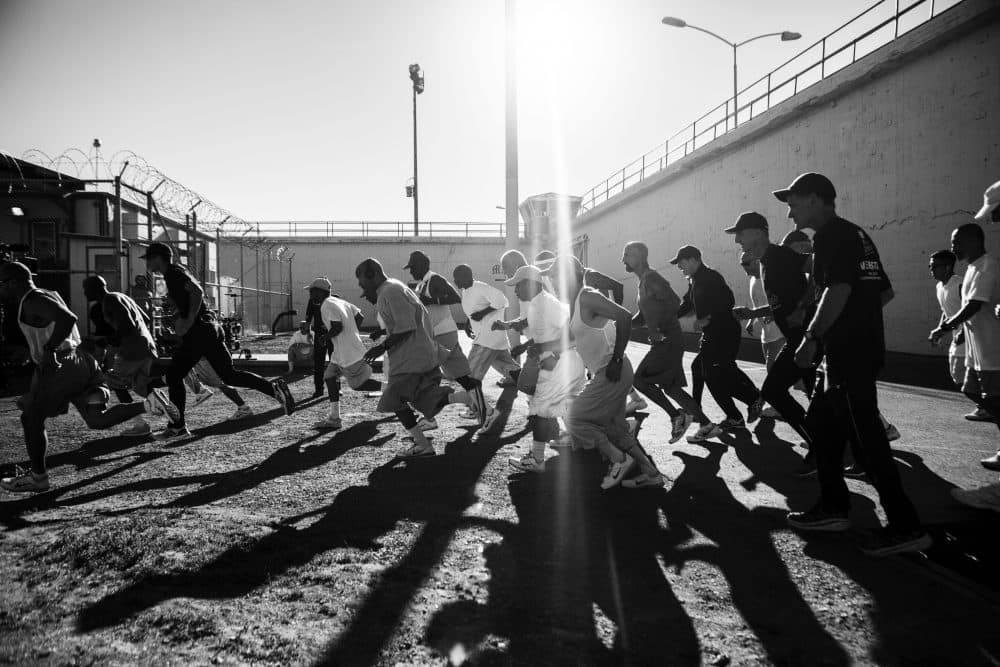
"The race begins on the west side of San Quentin’s lower yard, just before the sun creeps over the walls. Two dozen men surge forward. With few exceptions, all are murderers."
That’s how Jesse Katz began his story on the San Quentin Marathon. He’s been writing about gangs and crime in California for almost 30 years.
"And during some of my reporting for other pieces, I happened to find myself inside San Quentin prison for the first time," Katz says.
On that day, Jesse Katz was among men who’d been in San Quentin for a long time, and some who’d been incarcerated elsewhere before they’d arrived at what Katz describes as an especially grim place, even by prison standards.
"In an era of new, modern prisons, with all sorts of high-tech, kind of lockdown surveillance elements, San Quentin is this moldering castle on the Bay that dates back to the mid-1800s," he says. "And it feels like this dank, creaky dungeon."
'How Do You Run A Marathon If You're A Lifer?'
When a dank, creaky dungeon is home, what can you do? Sleep, if the night’s not too noisy. Study for the GED. There’s a theater program, a football team, a newspaper and a podcast to work on, if you’re so inclined. And for anybody who wants to run, seriously, there’s the San Quentin Marathon.
"When I heard that phrase, 'San Quentin Marathon,' it was hard to figure out what that actually entailed," Katz says. "How do you run a marathon if you’re a lifer, locked behind prison walls?"
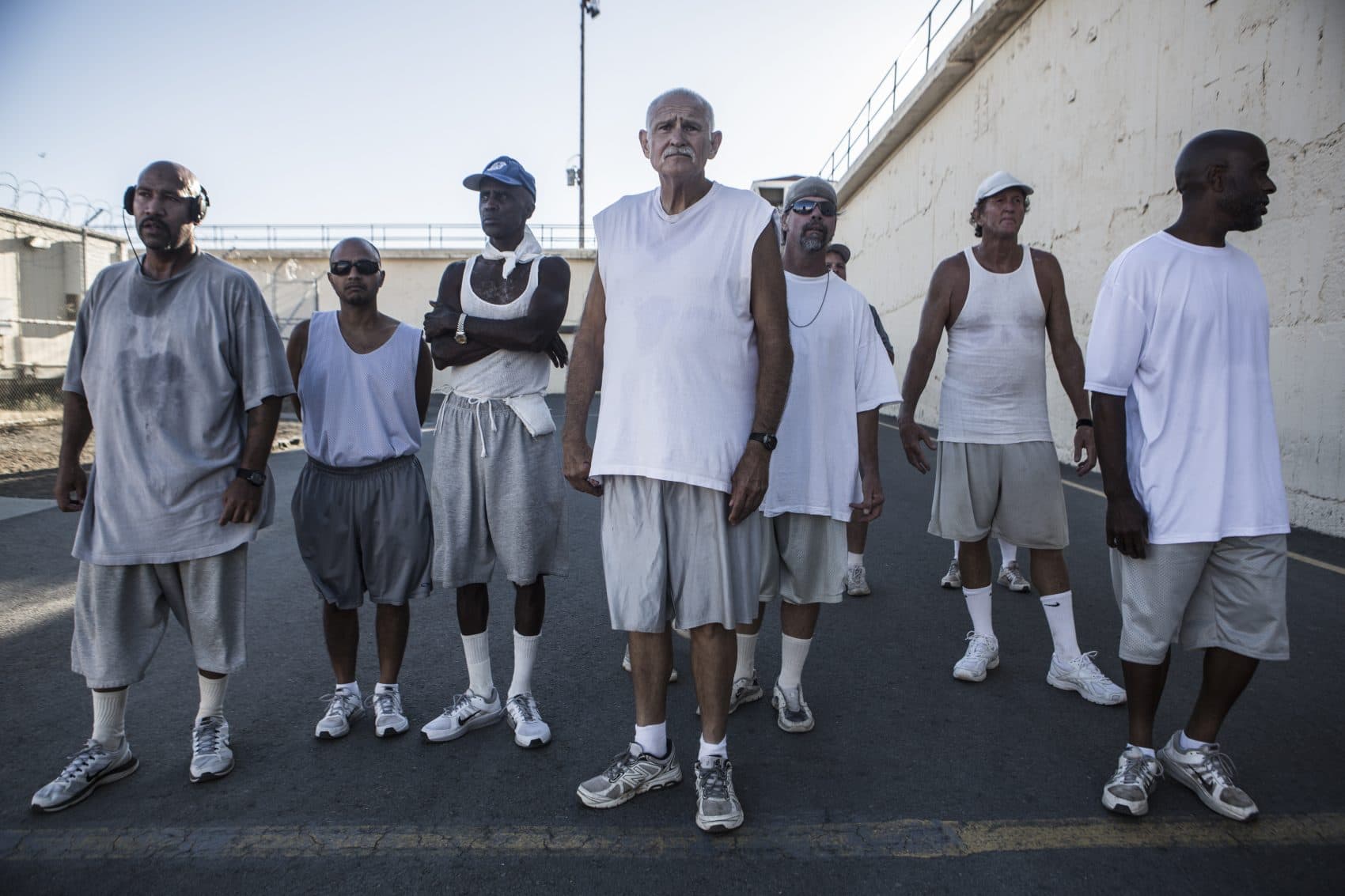
Patiently, as it turns out, with tolerance for the minimum range of things to see as you run — at one point a bit of a mountain in the distance, but just for a dozen strides or so. You develop a willingness to turn frequently. And if you’re a marathoner in San Quentin, you also run with the help and encouragement of coach Frank Ruona.
"I wasn’t that great of a runner, but I worked hard at it," Ruona says, "and I’ve run 78 marathons, 38 ultramarathons and been a pretty avid runner most of my life."
Ruona’s enthusiasm for marathoning led him to accept the presidency of the elite Tamalpa Running Club in Marin County. That’s why he was the guy who got the message from a woman named Laura Bowman, who was working as a teacher in San Quentin. Bowman had met some men whom she felt could benefit from a running coach. She contacted Ruona to ask if any of the members of his club might be interested in coming to San Quentin. Hard invitation to resist, right? Rouna emailed the club’s 700 members.
"And I got no responses," he says. "So when I heard from Laura the next time, she said, 'Did anybody show any interest?' And I said, 'No.' And I said, 'Well, why don’t I come over and check it out, and see what I can do?' "
Advertisement
'I Wasn't Intimidated'
Ruona didn’t need directions. His work as an estimator with a construction company had brought him to San Quentin before. Old, creaky dungeons tend to require repairs.
But according to Katz, Ruona might not have been central casting’s choice for a guy inclined to help prisoners learn marathoning.
"He’s not a classic, bleeding-heart, kumbaya-singing, feel-good guy," Katz says. "He’s a tough and occasionally crusty customer."
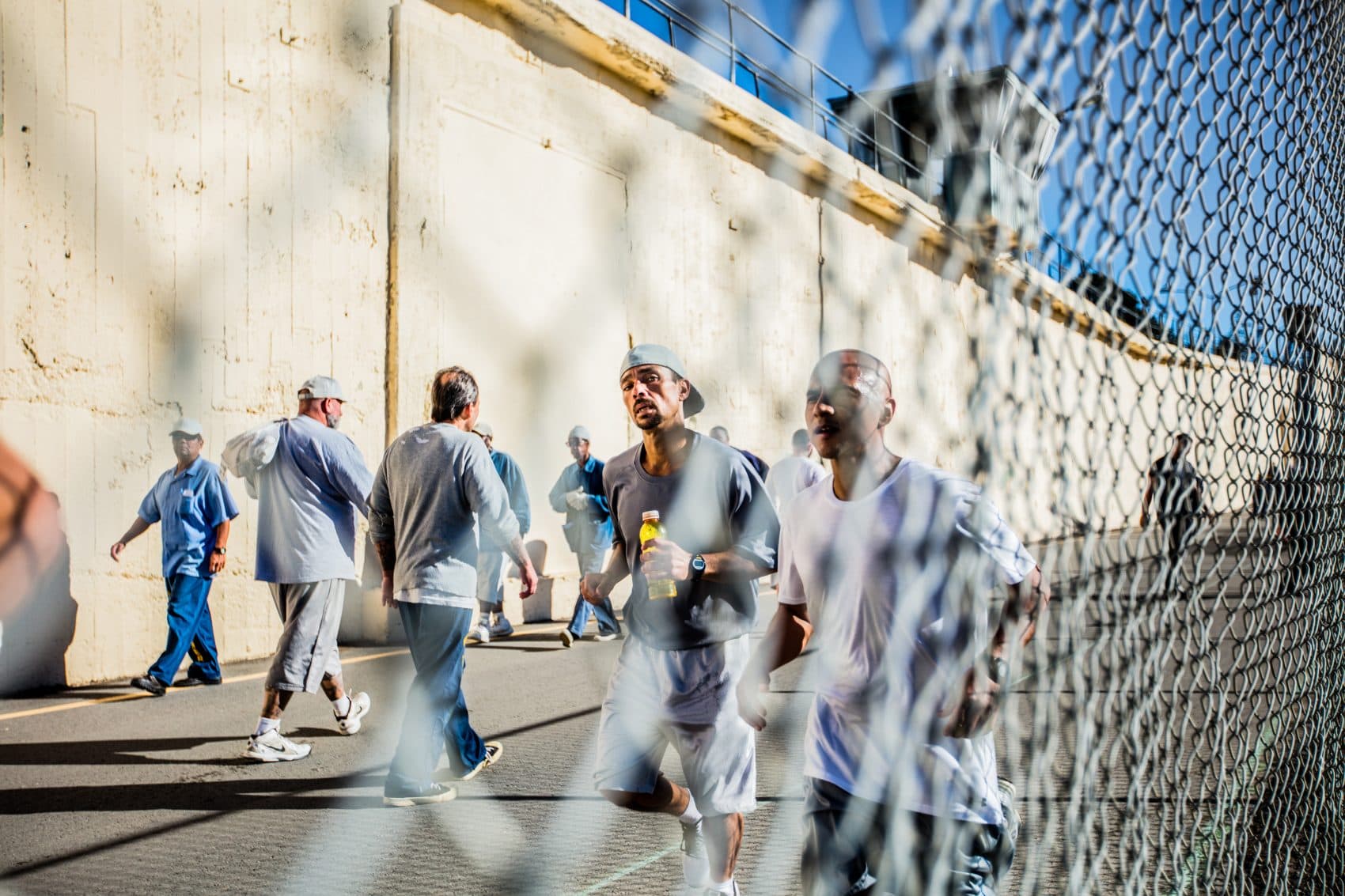
One thing Katz leaves out in that characterization is Ruona’s confidence. He says it never occurred to him to worry about consorting with men who’d been convicted of committing violent crimes.
"I spent four years in the Army, went to Vietnam," Ruona says. "I went through Airborne Ranger school. So I’ve dealt with a lot of people and a lot of situations. I wasn’t intimidated by going into the prison."
That was a good thing...
"Because, basically, pretty much everybody that was in the running club had a life sentence," says Bill Pillars, one of the guys in that club. "And when you get a life sentence, you really did something bad. A murder or something like that. So I was like, 'He should be concerned about something like that.' But he wasn’t. He wasn’t."
For the record, Bill Pillars was convicted of possession and sale of a controlled substance: cocaine. He was sentenced to 25 years to life, which sentence was modified after the California electorate amended the "Three Strikes law" that, in part, had determined that sentence. Ruona probably didn’t know that. He never asked any of the inmates what they’d done or how long they’d be in prison. He just helped those of them who showed up for his running sessions learn how to run as well as they could.
"Well, I’m a believer that we all make mistakes," Ruona says. "And some of us make bigger mistakes than others. And when I see the conditions that these guys are living under, where there’s two guys in a 9-by-6 cell, I know they’re paying a price. They’re paying a large price for whatever they’ve done."
'Round And Round, Hour After Hour — Going Nowhere Fast'
Ruona felt he could make the hard time a little less hard with his coaching. And reporter Jesse Katz feels that we’re all likely to benefit from whatever positive sense of self Ruona has helped to create in the inmates.
"Sometimes society wants to think that we’re putting these guys away forever, and we can just forget about them," Katz says, "when, in fact, most of these guys are coming out, and we should be invested in wanting them to be better people and more self-aware and more equipped for their return to society than they were when they went in there."
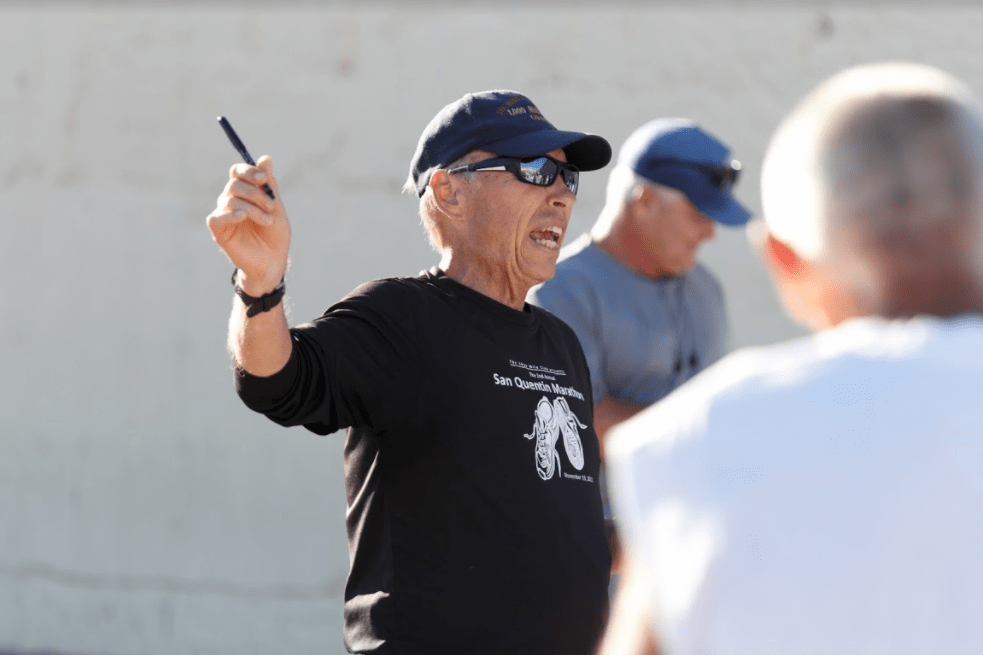
In his story about the San Quentin Marathon, Katz presents part of the challenge of running 26-plus miles:
"In the lower yard, a four-acre box on San Quentin’s sloped backside, the only way to recreate that distance is to run the perimeter — round and round, hour after hour — going nowhere fast."
"The exterior, the perimeter track was nothing but a brick wall, a gun rail, barbed wire, and that was it," Pillars says.
"And it’s roughly a quarter-mile," Katz says. "So you do the math. If you wanna get 26.2 miles out of that, you gotta go around 105 times."
"Basically, pretty much everybody that was in the running club had a life sentence."
Bill Pillars
What intrigued Katz was that the runners had nothing to gain except whatever satisfaction they could take from a personal achievement. There were no ribbons to win. There was no photographer at the finish line. That was OK with Pillars, who ran his first marathon in San Quentin while Ruona and teacher Laura Bowman looked on.
"So my last lap, I had so many cramps and was hurting so bad that Miss Bowman, Frank and a few outside spectators that came in to watch the race, they ran the lap with me and they helped me around the track to finish," Pillars says. "So that was my first marathon.
"It was really wonderful. And I was so happy. I think my time was, like, 5 hours and something. I came in dead last, which I didn’t care — because I was just so glad that they stayed down there with me and helped me finish the race. That was really a blessing."
It wasn’t the last of the blessings Pillars would receive, courtesy of Ruona. When Pillars left San Quentin, Ruona was waiting for him. He put him in touch with his boss at the construction company, who needed a supervisor in the equipment yard.
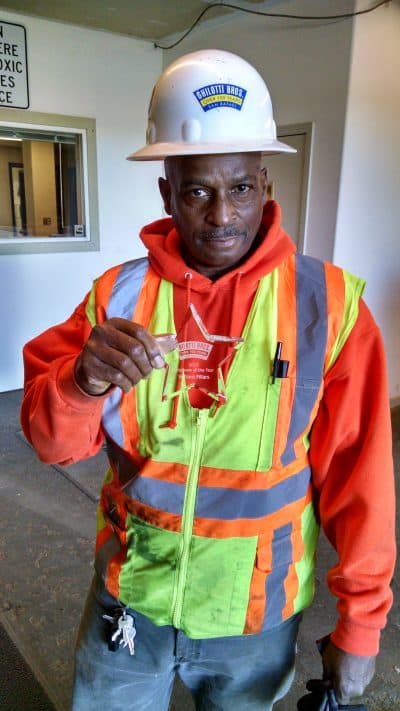
"I had my interview. I told him all that I could about my background and where I came from and that if I was hired on this job, I would give him 100 percent — 100-plus percent — every day," Pillars says. "I didn’t want to let Frank down. And I wasn't gonna let myself down."
Maybe it was Ruona vouching for Pillars that did the trick. Whatever it was, he got the job.
"And so I wanted to show them that I could make the yard better than what it was before I arrived there," Pillar says. "And that’s what I worked on. And I received employee of the year award. And I was so very shocked. Even before, guys who had worked for the company, like, 16, 17 years would walk up to me — I didn't even know their names — tell me, say, 'Hey, you know what? You really improved the yard.' That’s what I was striving for, and I still strive for that today."
OK, but all work and no recreation is no good for anybody, former residents of San Quentin included. Pillars knows that as well as anybody, so he and Frank Ruona, sometimes they still run together.
"Well, I’ll tell you, it’s nothing like it was while I was incarcerated in San Quentin," Pillars says with a laugh. "Our friendship has really grown, really, really, really great. Really big. So Frank, to me, now, today, it’s like we’ve been friends for years."
Pillars has no intention of ever returning to San Quentin. Ruona’s good with that. He’s retired now, so he’s got more time than ever to work with the runners on that quarter-mile loop, and, at 72, he sees no reason that should change any time soon.
Read Jesse Katz's story, "Inside The San Quentin Marathon," which we found in the 2017 edition of "The Best American Sports Writing."
And for more on the marathon, check out the forthcoming documentary "26.2 to Life: The San Quentin Prison Marathon."
This segment aired on March 24, 2018.
